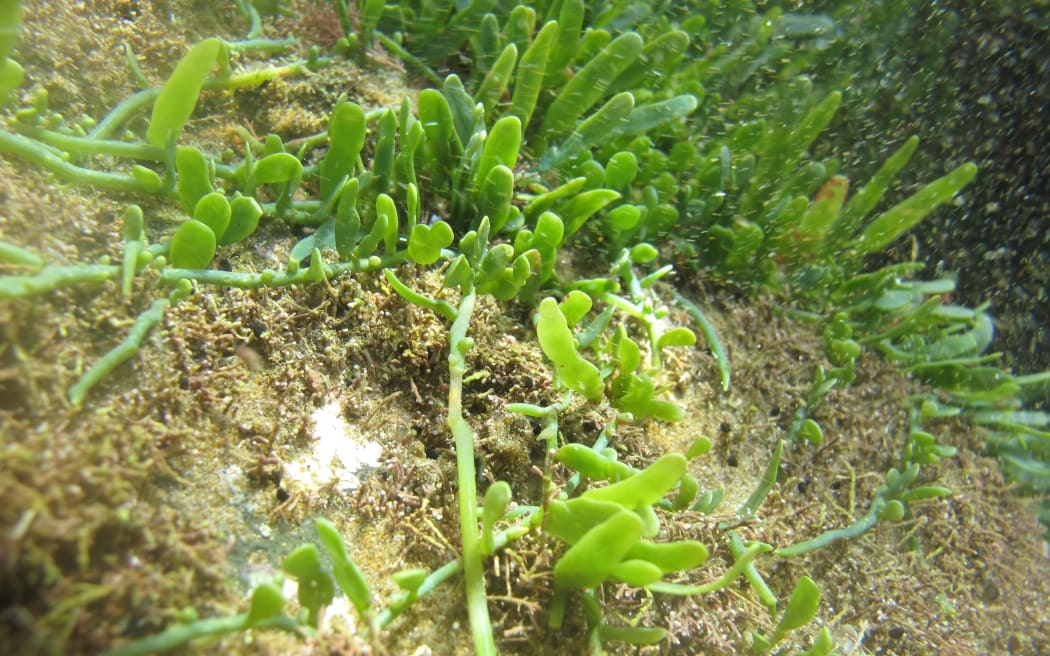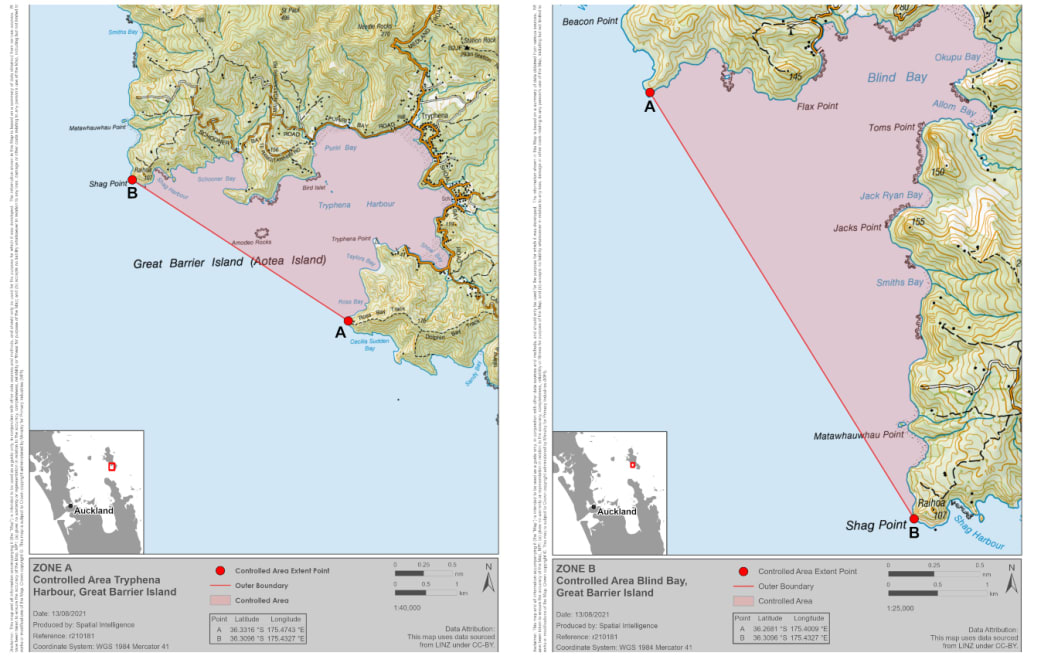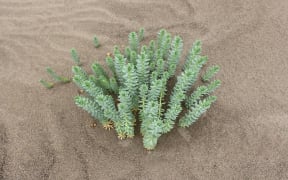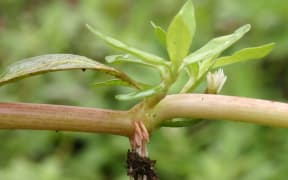
Caulerpa brachypus growing under water. Photo: Supplied by Ministry for Primary Industries
Hauraki Gulf boaties are being told to modify their behaviour near Aotea/ Great Barrier Island as part of ongoing efforts to contain an invasive seaweed that could overwhelm native species.
Tougher restrictions came into force overnight, making it illegal to anchor most boats on three bays on the island except in an emergency, or in a few other exceptional circumstances by permit.
It's part of efforts to contain the invasive, non-native seaweed caulerpa brachypus, which can spread rapidly, often .attached to anchors, and potentially overrun native species.
A controlled area notice and a rāhui imposed by mana whenua for Aotea, covering Blind Bay, Whangaparapara Harbour and Tryphena Harbour have been in place since mid-2021, when the seaweed was first discovered there.

The maps show the controlled area. Photo: Supplied / Ministry for Primary Industries
Until now, anyone wanting to anchor in the areas has needed a permit from Biosecurity New Zealand that required the vessel's anchor and chain to be cleaned of any seaweed debris before departing the area.
However, Biosecurity New Zealand's director of response, John Walsh, said after a review of the restrictions in place, the authority decided they needed to be ramped up and anchoring boats in the three areas was now off-limits except in an emergency.
"Caulerpa easily breaks into small fragments which can then be moved to other areas by people going about water activities such as anchoring, diving and fishing, which is why we need these legal controls," he said.
"Permits will not be needed in an emergency - for example, where vessels need to shelter from weather," he said.
"Local residents who need to use a vessel for their regular transport and those needing to anchor for scientific research will be able to apply for permission."
Walsh said since caulerpa was first detected it has rapidly spread on parts of Aotea.
"In Blind Bay, which is the bay with most of the caulerpa in it, there's now 44ha of caulerpa in that bay," he said.
"That's about a third of the total area of the bay and in some places, it is a very dense, carpet-like infestation across the floor of the bay.
"You can sail in there, you can cruise in there on your boat, but don't drop your anchor, and don't fish.
"Don't risk spreading the seaweed, where it might take a hold and cause environmental damage."
Fishing rules relaxed for beaches
Walsh said rules around fishing off Great Barrier beaches had been relaxed, with rods and hand lines now allowed to be used again.
"We looked hard at fishing and determined that line fishing from the shore or structures attached to the shore enabled local people to still fish for kai," he said.
"However, all other types of fishing remain prohibited. Spearfishing, kina and crayfish gathering, net fishing and drift fishing from any type of vessel are not allowed."
Walsh said whether the seaweed continued to spread or not depended on the locals.
"One of the things that we do know about caulerpa is it doesn't float, it sinks to the bottom and so when it gets to something over 30 metres to 35 metres deep, it has no sunlight and can't survive and dies.
"That means it's unlikely to be able to be spread by ocean currents around the Hauraki Gulf."
Walsh said Biosecurity New Zealand surveyed high invasion risk areas of the Hauraki Gulf last summer.
He said caulerpa wasn't detected there, but officials couldn't rule it out and surveillance around the Hauraki Gulf area would continue over summer.





